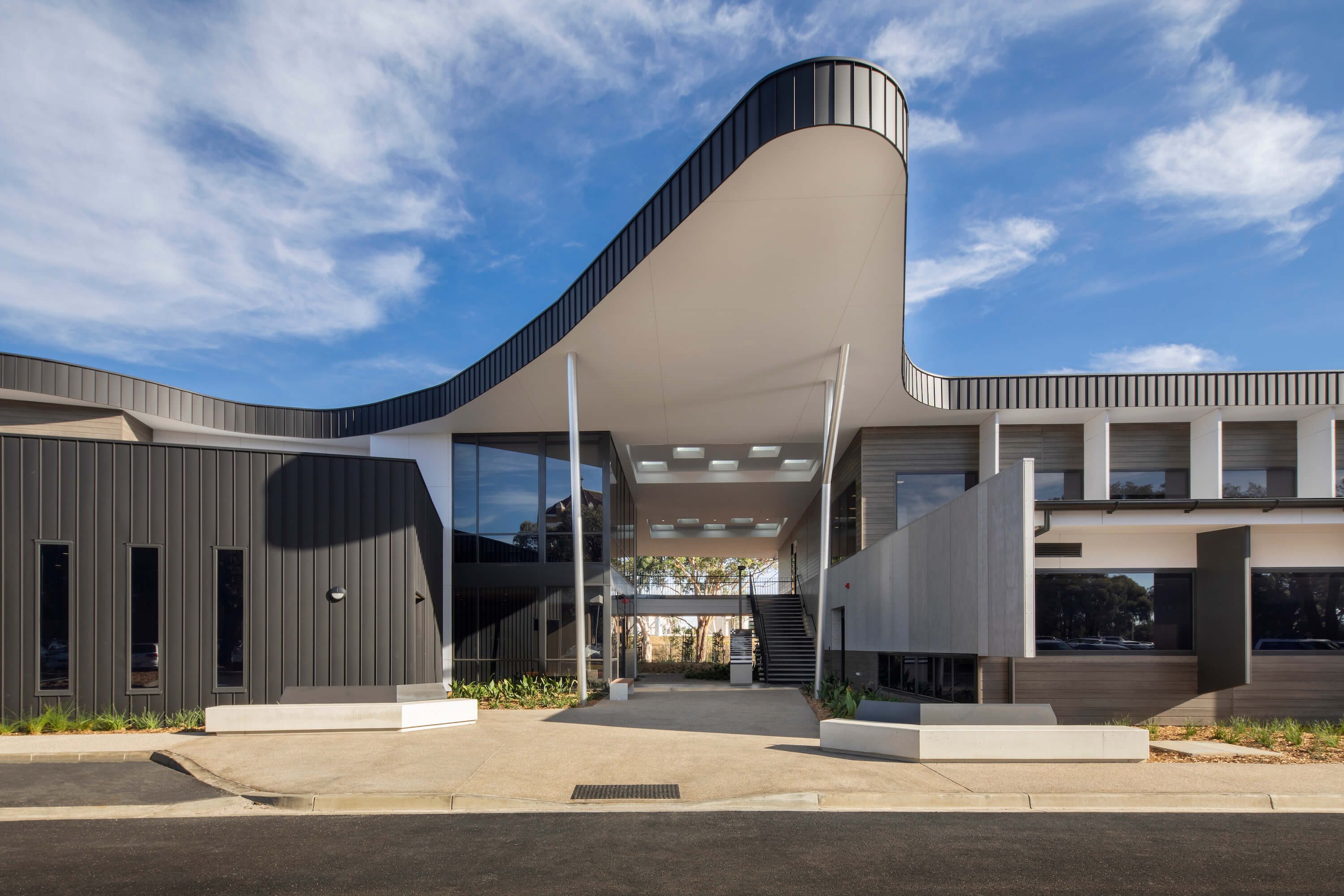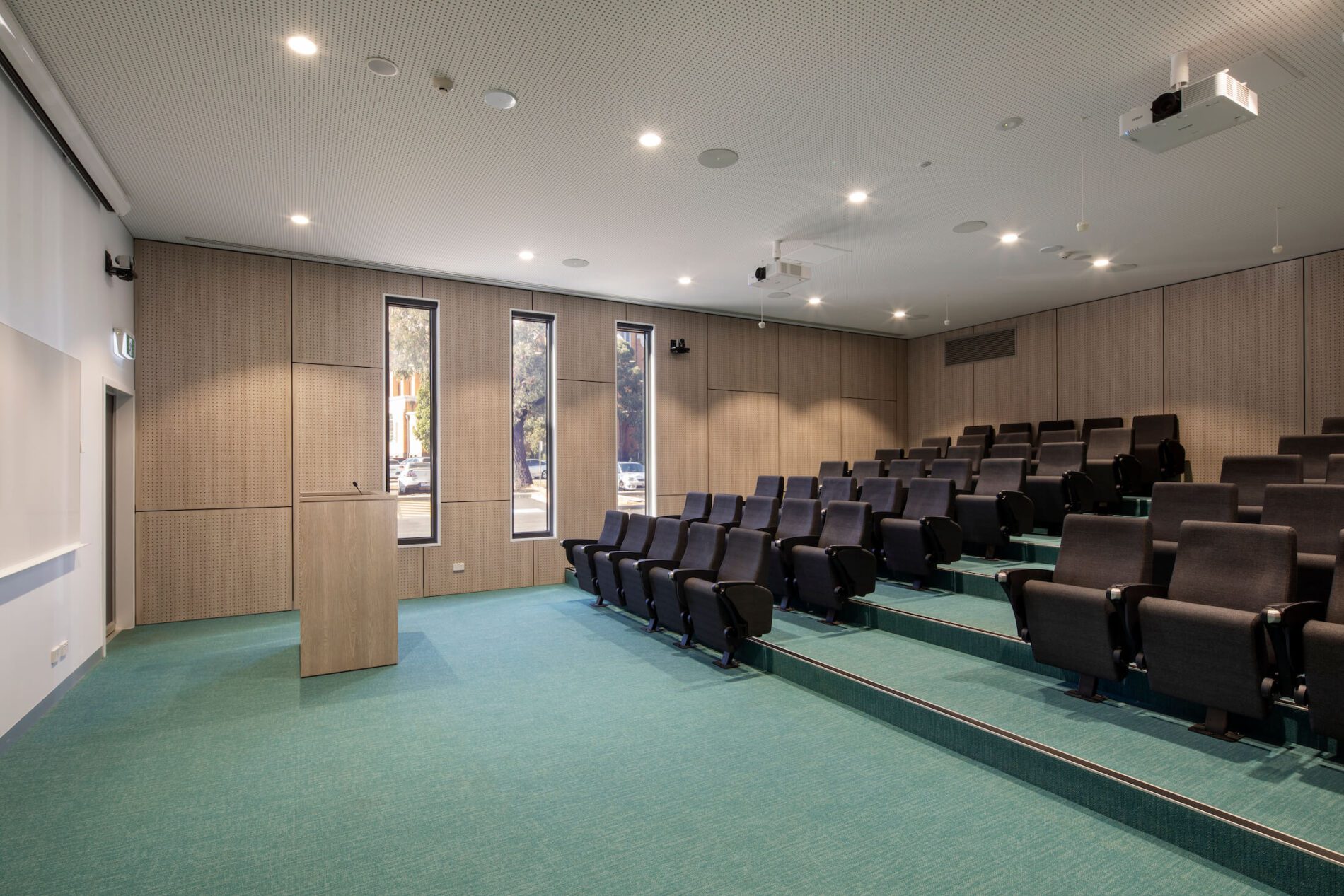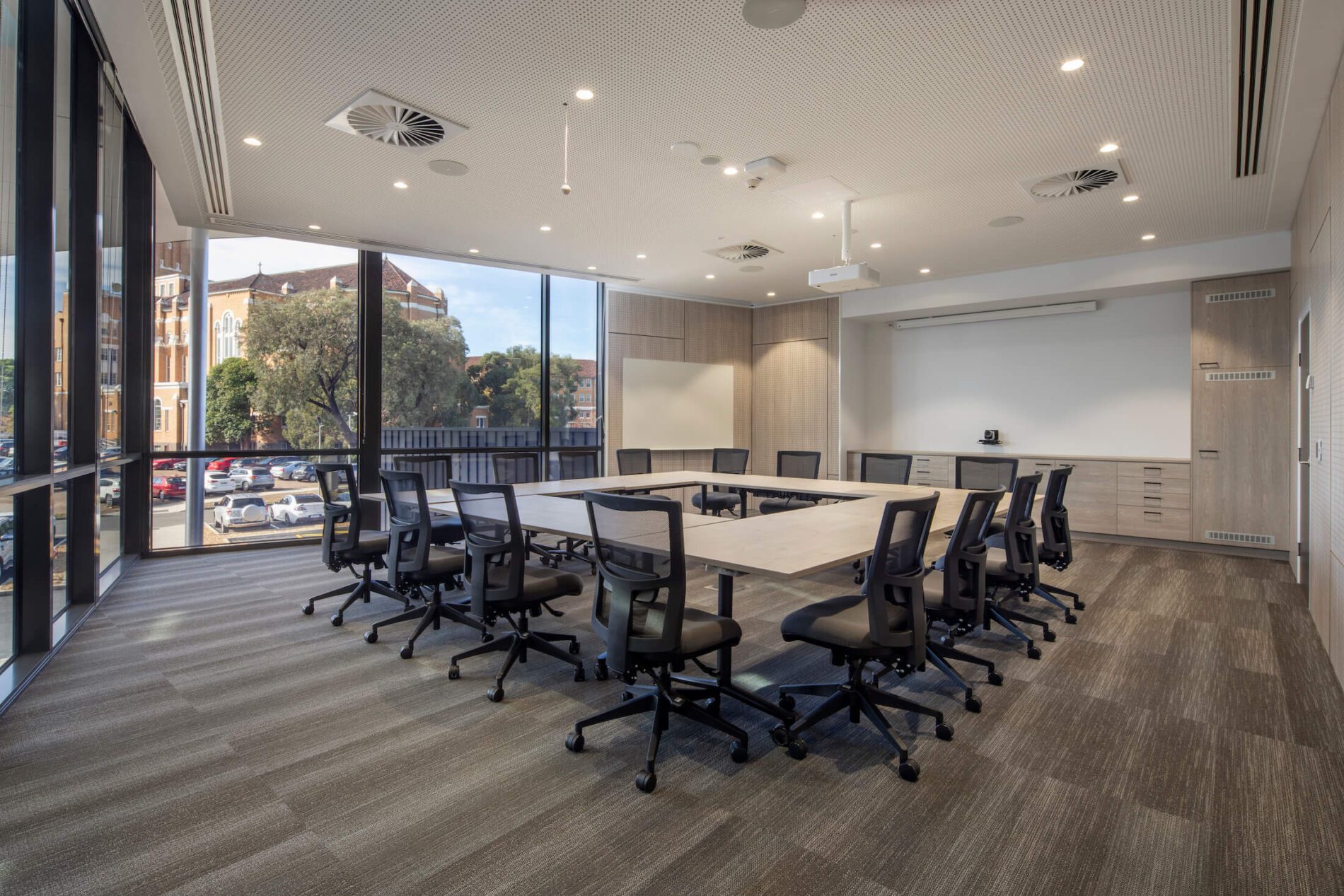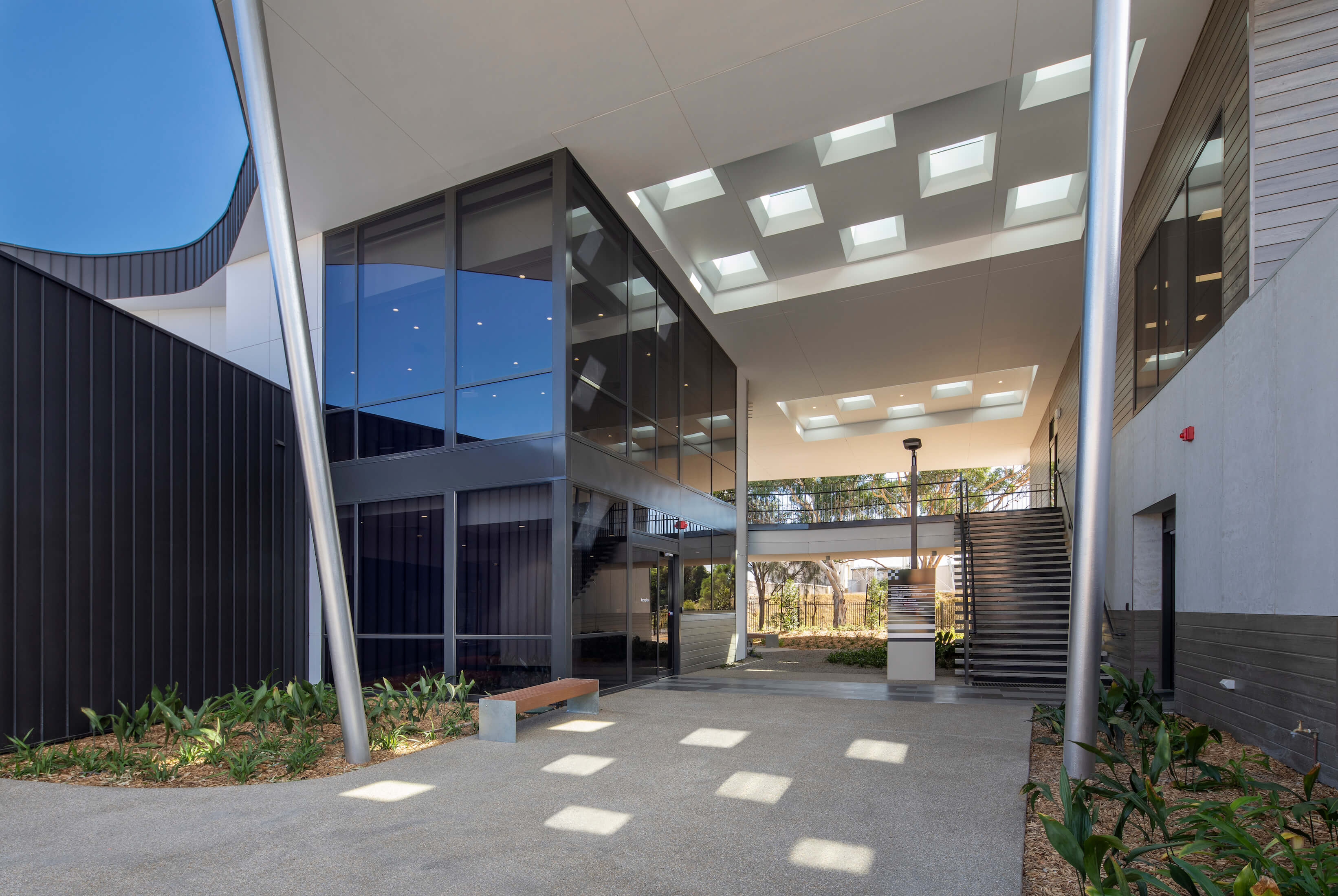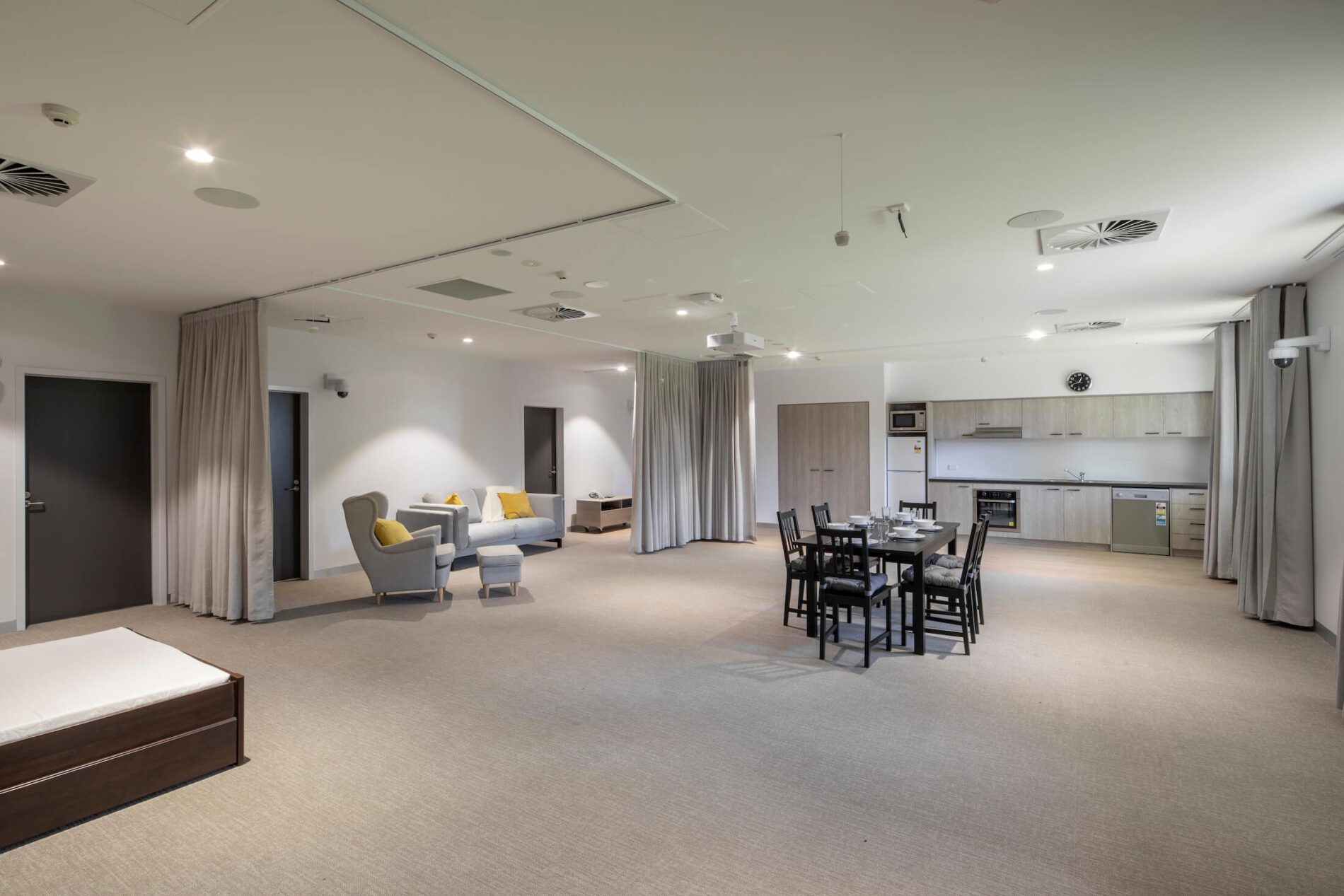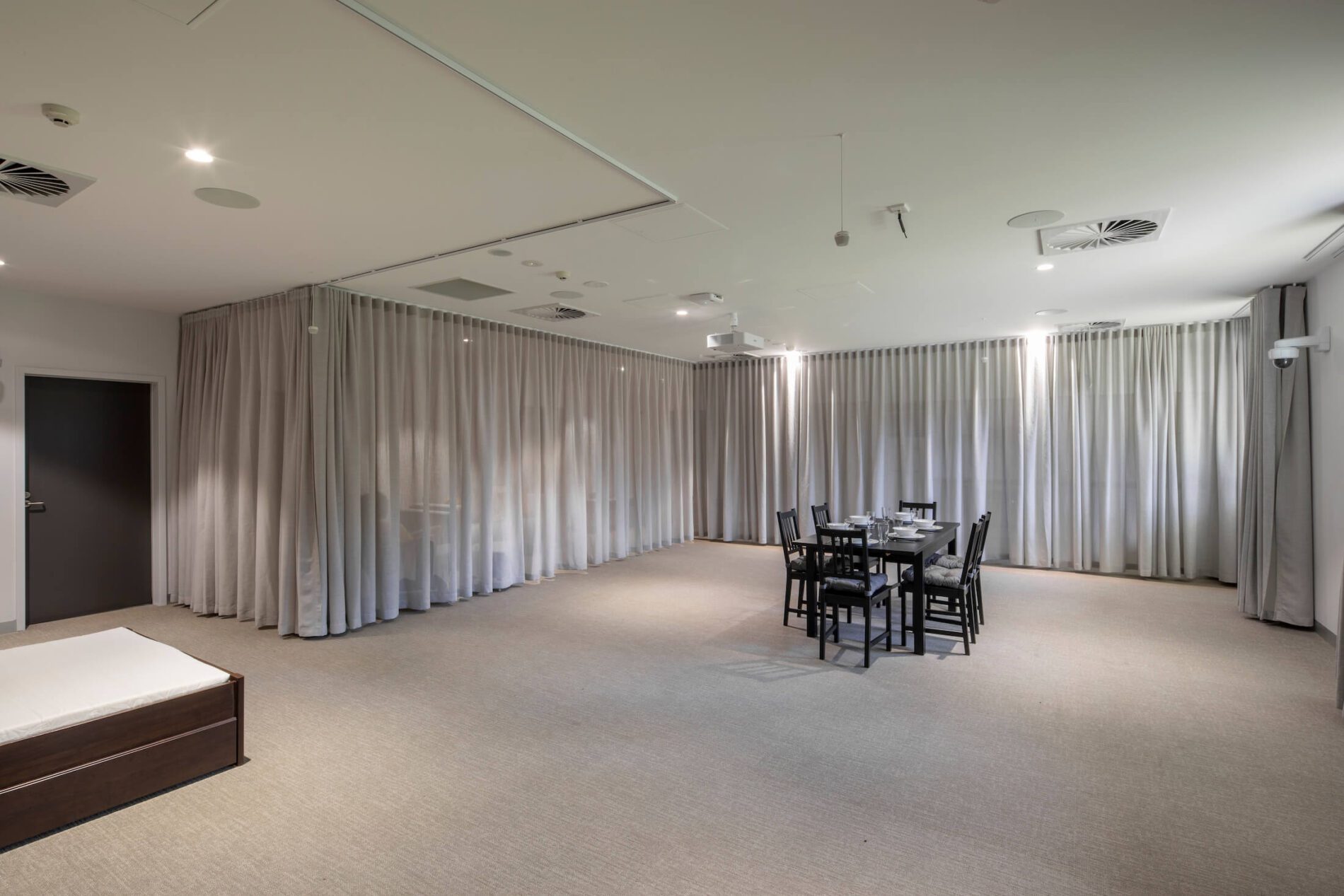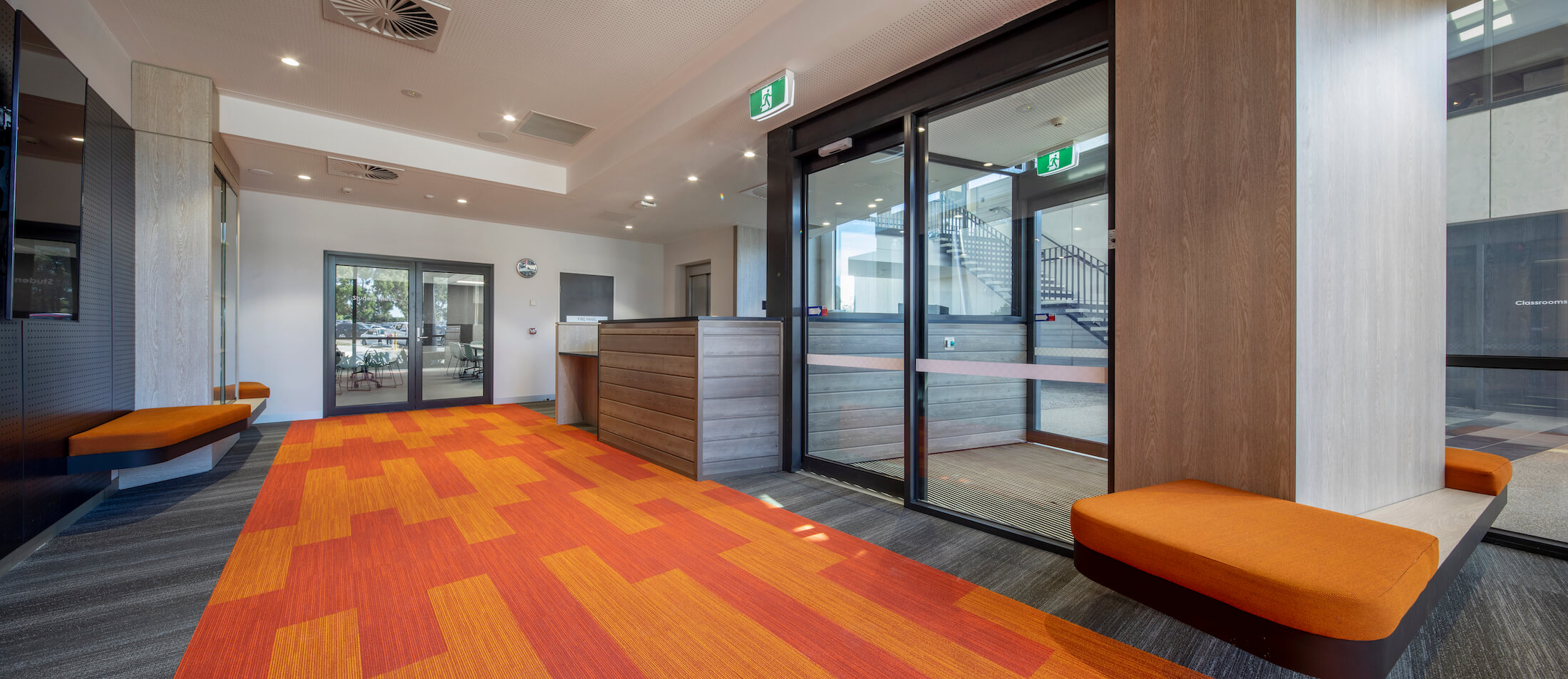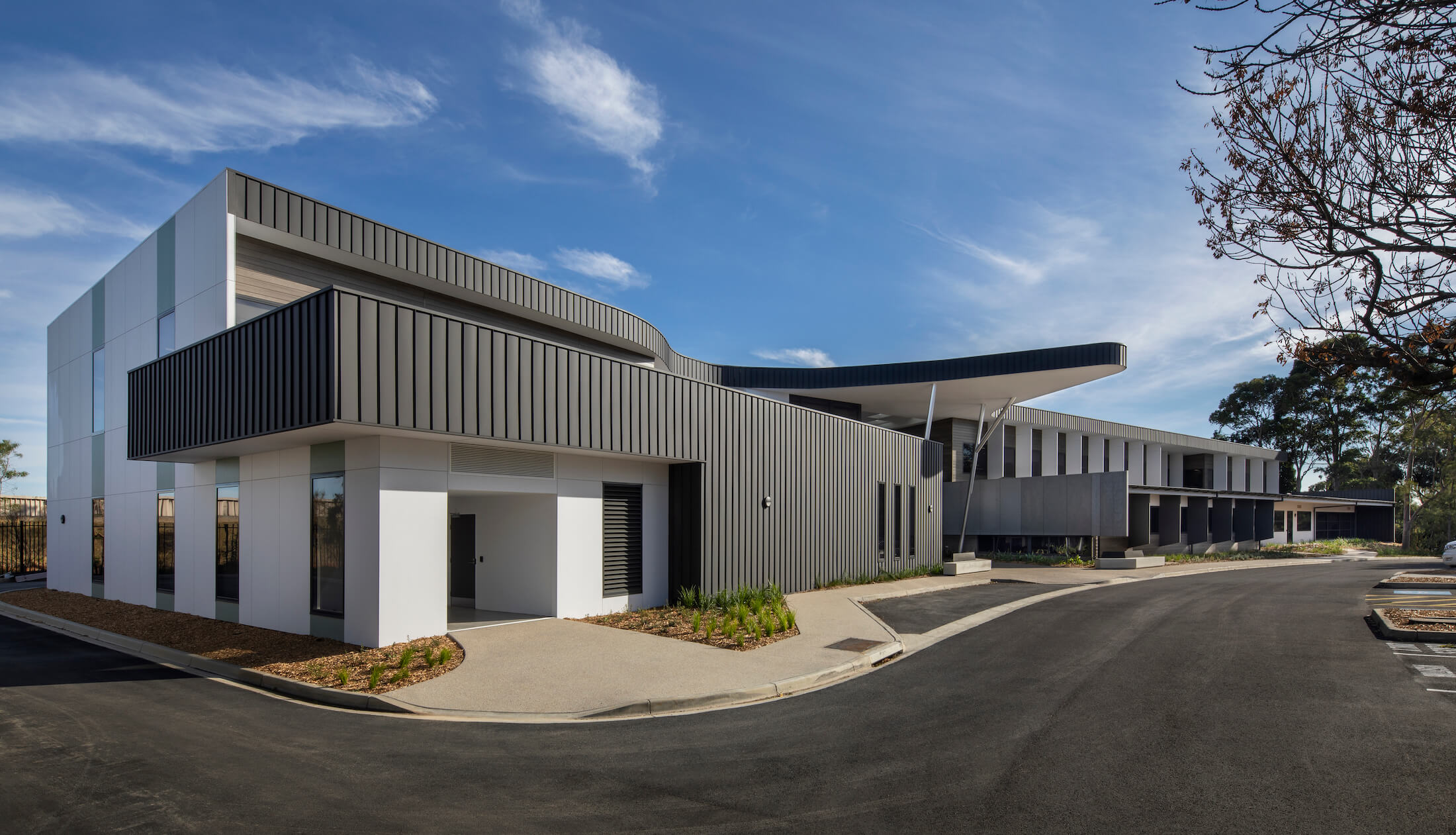How might adaptive design serve to protect victims of family violence?
At the Victoria Police Academy in Glen Waverley, we worked closely with Victoria Police management to design an innovative education centre that would better prepare police recruits to respond to family violence incidents. With a dedicated simulation centre modelled on an average suburban home, the Centre of Learning for Family Violence is designed to be modified before each session to simulate a variety of scenarios with ever-changing stimuli.
Complex sensory elements are layered within the design to raise recruits’ anxiety levels, activating opportunities for decision-making, and preparing them to better respond to incidents they will likely face on duty. Beyond the high fence, long pavers subliminally draw visitors to the front door, and wet-look grass presents an unconscious deterrence from crossing the yard to check blind corners for potential threats.
We worked with Victoria Police to design a realistic, home-like environment indoors. Hidden compartments in the kitchen rangehood might conceal a weapon. Multiple entry and exit points offer challenges for risk assessment, and long curtains and large cupboards have the capacity to hide actors performing as perpetrators or victims. To offer privacy to the simulations, we reworked the original site plan to distance the simulation centre from the rest of the campus.
A welcoming central atrium canopy for the education headquarters extends respectfully towards the historically significant chapel on site, where an open stairwell encourages interaction between recruits, staff and sworn members. The iconic police Sillitoe tartan-inspired skylights make this communal space even more welcoming, drawing light down to brighten the double-height void.
The offices, too, are more sociable in their design. Co-location of policing units and teams has built positive relationships since the facility opened, narrowing the gap between operational and training environments.
Photography: Blue Tree Studios


